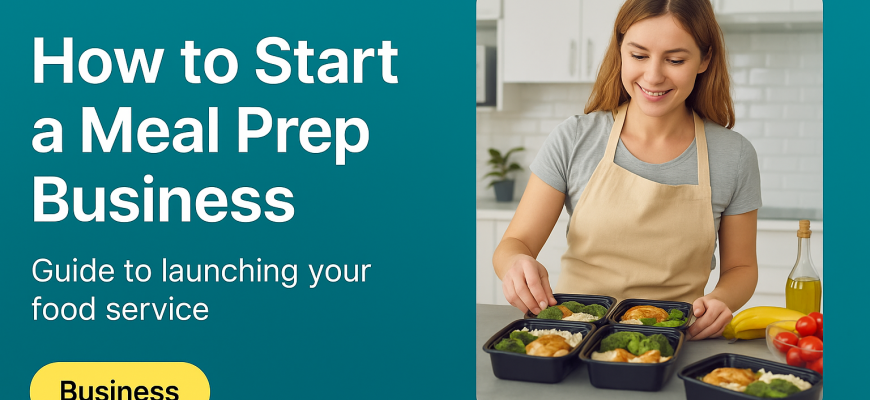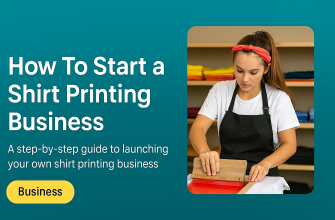Launching a meal prep business can be an empowering journey for a woman entrepreneur, even with no prior experience. The demand for fresh, convenient meal solutions is booming – experts predict the meal kit industry could reach $28 billion by 2028. With careful strategy and passion, you can carve out your niche and grow a thriving business. This guide breaks down the essentials: how to find your audience, create compelling meal offerings, set prices and control costs, build your brand, choose a delivery model, win your first customers, and plan for growth. Each section offers practical steps and encouragement so you can take action, even if you feel intimidated at first. Remember: every big business starts with a first brave step.
- Step 1. Identify Your Target Market and Define Your Niche
- Step 2. Create Your Meal Offerings
- Step 3. Pricing Your Meals and Controlling Costs
- Step 4. Build Your Brand and Online Presence
- Step 5. Choose Your Delivery Model: Local, Pickup, or Shipping
- Step 6. Acquire Your First Customers
- Step 7. Scaling Up: Grow Your Meal Prep Business
Step 1. Identify Your Target Market and Define Your Niche
A clear target audience and niche will be your business’s foundation. Rather than trying to serve everyone, focus on a specific group and meal style that excites you. For example, you might specialize in healthy family dinners, vegan meal boxes, fitness-focused high-protein meals, or kid-friendly organic lunches. Choosing a niche helps you stand out and tailors your marketing. As Shopify advises, even the only meal prep company in town should “focus on a specific niche… Identify your target audience (e.g. busy families looking for kid-friendly healthy meals) and a culinary specialty”.
Steps to finding your niche:
-
Research your local or online market. Who needs meal prep help? Busy professionals, new parents, fitness enthusiasts, or those on special diets (gluten-free, keto, etc.) are common audiences. Look at local Facebook groups, farmers’ market patrons, or friends’ networks to see what people want.
-
Interview potential customers. Ask friends, family, and acquaintances what meals they struggle to make or what they’d pay for. Surveys and casual polls can uncover unmet needs.
-
Analyze competitors. Check other meal services in your area: what are they offering, and who do they serve? Look for gaps. If nearby services focus on low-carb diets, maybe there’s demand for vegetarian or budget-friendly meals. Using a SWOT analysis (strengths, weaknesses, opportunities, threats) can help you pinpoint your advantage.
-
Align niche with your passion. Your personal interest in a food style will carry you through hard work. If you love vegan cooking, for example, you could offer “all-in-one vegan meal boxes for busy professionals”. This becomes your unique selling proposition (USP): what makes customers choose you over others.
By narrowing your focus, you can tailor recipes, marketing and branding to that audience. For instance, a keto-friendly menu with clear macro counts will resonate with fitness clients, while colorful family meal packs will appeal to parents. Defining your target persona – their age, lifestyle, and challenges – will guide every decision, from menu planning to messaging.
Step 2. Create Your Meal Offerings
Next, design the products you’ll sell. Will you deliver fully cooked meals, deliver meal kits (pre-portioned ingredients + recipes), or offer in-home chef services? Each model has pros and cons. You might start by offering one or two signature meal packages (e.g. a week’s worth of dinner entrees), then expand to a subscription or on-demand model.
Consider these product options:
-
Pre-cooked meal packages (“heat-and-eat”): Customers get ready-made meals (in microwavable or oven-safe containers). This is convenient for busy clients who just reheat. It’s great for diets where calorie or nutrition control matters. However, you must manage cooking for volume and ensure safe transport (coolers, ice packs).
-
Meal kits (ingredient boxes): Like popular national brands, you send portioned raw ingredients and recipes. Customers enjoy cooking without shopping. This can lower your refrigeration/food-safety burden and let you tap into the “cooking at home” trend. However, recipe-writing and packaging steps are added work.
-
Subscription vs. On-Demand: Subscriptions (weekly or monthly meal plans) give you predictable demand. You can plan buying and cooking ahead, which reduces waste. But building a subscription base takes marketing effort. On-demand (a la carte orders) can attract one-off customers more easily but requires flexibility. You could start by letting customers order weekly meals, then later offer a discounted subscription tier.
As Shopify notes, pick the format that fits your goals and audience. If health nuts in your area love smoothies, maybe start with grab-and-go smoothie packs. If families want dinner ready after work, emphasize plated meals. When crafting your menu, focus on a few excellent dishes, not dozens. It’s easier to perfect and market three amazing pasta meals or salad boxes than a huge, unfocused menu.
Practical steps:
-
Start small. Develop 3–5 core meal recipes that fit your niche (e.g. grilled chicken with sides, a vegetarian curry, a low-carb breakfast box). Test them with friends for taste and portion size.
-
Plan packaging. Choose containers that keep food safe and look professional. Consider eco-friendly materials if that appeals to your audience.
-
Menu variety. Rotate ingredients seasonally or offer “specials” so customers don’t get bored. For example, a summer menu might feature fresh salads and spring veggies, while winter brings hearty stews. A rotating menu also helps manage ingredient costs by using seasonal produce.
-
Consider add-ons. For higher sales, offer extras like snacks, juices, or smoothie packs. You might also allow customers to “build a box” from a list of proteins, carbs and veggies.
With clear offerings, you can communicate exactly what customers will get. Think of your meal packages as solving a problem (healthy convenience), and highlight that in your descriptions.
Step 3. Pricing Your Meals and Controlling Costs
Setting the right price is critical. You need to cover all costs (ingredients, packaging, labor, delivery, overhead) and make a profit, without scaring away customers. A useful rule is to calculate the cost of goods (COG) per meal and then apply a markup (often 2–3× the ingredient cost for healthy prepared food). Many meal prep startups find their costs per meal range around $5–$15 depending on portion size and ingredients.
Key factors for pricing include: ingredient quality, portion sizes, and packaging. A guideline from industry sources suggests weekly meal plans typically run $50–$150 per week (for several meals), while individual prepared meals can be $8–$25 each. For example, customers often pay around $10–$15 per entree serving of pre-cooked healthy meal. Use this to gauge your local market.
To control costs and protect your margins:
-
Bulk and seasonal buying. Purchase staples (grains, beans, frozen veggies) in bulk to lower per-unit cost. Build menus around seasonal produce (cheaper and fresher).
-
Portion control. Weigh or measure ingredients carefully so portions are generous but not wasteful. Consistent portions also build trust with customers.
-
Reduce waste. Plan menus so leftovers in one meal can be repurposed in another (e.g. roast veggies become soup base). Use inventory tracking (FIFO – first in, first out) to avoid spoilage.
-
Simplify packaging. Invest in reusable or minimal packaging to cut costs. For example, durable plastic containers can be returned by customers (like a library of containers).
-
Leverage free marketing. Keep overhead low by focusing on low-cost marketing: social media posts, community events, and word-of-mouth. This boosts profit without big ad spending.
You can even test pricing with first customers: offer a discount in exchange for feedback. Adjust up or down based on their reaction. Remember to factor in labor (your time or helpers) and delivery costs (fuel, courier fees). As one guide notes, startup costs can be surprisingly low: you might launch from a home kitchen for as little as $1,000. Start small, refine your model, and reinvest profits back into the business to grow.
Step 4. Build Your Brand and Online Presence
Your brand is your identity. It includes not just a catchy name and logo, but the feel and values of your business – the vibe that will attract your target customers. For a meal prep business, a strong brand conveys trust, quality, and the lifestyle you promote (e.g. “fresh, family-friendly”, “fit and healthy”, or “eco-conscious”).
Key branding steps:
-
Name and logo. Choose a name that reflects your niche (e.g. “Green Plate Prep” for a plant-based focus) and design a simple logo. Online logo makers or freelance designers can help, but keep it clean and professional.
-
Consistent look and voice. Pick a color scheme and font style that feels right (e.g. bright and cheerful for family meals, green and natural for health food). Use the same palette on your website and social media. Write in a tone that matches your audience – friendly and helpful for busy parents, energetic and motivational for fitness clients.
-
Strong USP messaging. Emphasize what makes you different. For instance, “chef-crafted gluten-free dinners for post-work burnout” or “organic vegan meals delivered weekly.” Keep this selling point clear on all your marketing. As Metrobi advises, solidify your USP and communicate it consistently.
-
Content and expertise. Start a simple blog or use social posts to share healthy eating tips, recipes, or behind-the-scenes peeks into your kitchen. This builds authority and trust. For example, share a quick cooking hack or nutrient info for each meal. Useful content keeps people coming back to your brand.
Online presence: In today’s world, most customers will find you online. Set up:
-
A simple website. You don’t need to be a tech expert. Platforms like Shopify, Wix, or Squarespace have meal-delivery templates. Your site should clearly list your menu, prices, and ordering instructions. Include appetizing photos of your meals. If you’re not ready for full e-commerce, at least have a Contact form and your story. Many experts stress that a website “can enhance your online meal prep business, making ordering accessible to customers”.
-
Social media. Create business profiles on Instagram and Facebook (and even Pinterest). Post regularly – beautiful meal photos, prep videos, client testimonials, healthy tips. Engage: respond to comments, ask questions (“Which new menu item should I add next week?”), and use local hashtags (#CityNameMealPrep). Even small ads on Facebook can boost your visibility. As one source notes, being active on social media with engaging posts helps you reach more customers.
-
Online reviews and listings. Claim your business on Google My Business (so people nearby can find you by searching “meal prep near me”). Encourage satisfied customers to leave a review on Google or Yelp. Good reviews build trust, especially when you’re new.
By building a cohesive brand, you make your business memorable. Every Facebook post, Instagram Story, or flyer is a chance to reinforce your brand promise and values. Be genuine and enthusiastic – your passion will resonate with customers.
Step 5. Choose Your Delivery Model: Local, Pickup, or Shipping
Freshness is king in meal prep, so how you deliver meals is crucial. There are a few common approaches:
-
Local Delivery: You or a hired driver delivers meals to customers in your area. This is great for ready-to-eat meals. You’ll need insulated coolers or delivery boxes. You can start by driving yourself or using a service like DoorDash, Postmates or a local courier for larger volume. As Shopify notes, some delivery partners work like UberEats for prepared meals. Local delivery keeps you close to customers and control quality.
-
Customer Pickup: Customers come to pick up meals from your kitchen, home, or a drop-off point. This saves on delivery costs and can work well if you are near an office park or gym. Just ensure a safe pickup location and schedule (e.g. “Pick-up on Fridays at 5-7pm”). Offer incentives like free reusable containers if they return them next week.
-
Shipping (Meal Kits/Dry Goods): Shipping perishable meals is tricky (ice packs, fast transit). Many small startups avoid this until they scale. However, if your niche is shelf-stable meal kits (dry goods, cereals, or treats), you can ship nationwide. Note that nationwide companies often have higher packaging and shipping costs. For a beginner, it’s often best to focus on a local radius.
Choosing a model: If you’re just starting, focus local. Local delivery and pickup keep things simple and cost-effective. Local customers also love supporting homegrown businesses – “buying from a local meal prep means spending less on transportation costs and lower delivery fees”. You can partner with community centers or corporate offices to arrange group deliveries.
Plan for freshness: if delivering cooked meals, package them so they stay cold/fresh (gel packs, insulated bags) and instruct customers to refrigerate quickly. If offering kits, list whether items are perishable or shelf-stable. Remember to comply with health guidelines in your area.
Ultimately, decide what works for your schedule and capacity. You might start by delivering within a 10-mile radius and offering pickup at a local gym or community kitchen. As you grow, you can add vehicles or partner with pros for broader reach. The key is reliability – deliver meals on time and in perfect condition to build trust.
Step 6. Acquire Your First Customers
Getting those first orders can feel scary, but every business starts somewhere. Use your personal network and grassroots marketing to kickstart.
Actionable strategies:
-
Referral incentives. Give a discount or small free item (like an extra side) to customers who refer others. For example, “Refer a friend and you both get 10% off next order.” Upper Inc. highlights referrals as powerful: “When someone suggests your meal prep services to a friend, it automatically targets those people… offer a reward or discount when referring”.
-
Leverage social media. Post mouth-watering photos of your meals on Instagram and Facebook. Host giveaways (“Tag a friend to win a free meal box”) to grow your audience. Share behind-the-scenes stories of cooking to create connection. According to experts, having a social page and “showcasing regular updates, offers, and behind-the-scenes posts is a good way to build trust”.
-
Local partnerships. Approach local gyms, yoga studios, offices, or coworking spaces. Offer to cater a free tasting or leave flyers. People who work out or have busy days often appreciate meal prep solutions. You could run a special with a nearby business: e.g. 15% off for members of XYZ Gym.
Every time you get a satisfied customer, encourage them to spread the word. Share positive testimonials (with permission) on your site or social media. Use phrases like “Thanks to [Name] for the kind review!” to make your business relatable.
Remember: confidence sells. Even if you’re new, act like a seasoned pro – have printed menus, a business card or a neat online profile. The more professional and passionate you appear, the more people will trust your meals. And keep refining your pitch: clearly explain what your meal prep service offers and why it helps (time-saving, health, quality).
Step 7. Scaling Up: Grow Your Meal Prep Business
Once the basics are running smoothly, it’s time to plan for growth. Scaling doesn’t have to happen overnight – it can be gradual, aligning with demand and your comfort level. Focus on expanding in ways that feel sustainable.
Growth strategies:
-
Diversify your menu. Add new meal options over time to attract more customers and keep existing ones excited. For example, introduce vegetarian, vegan, gluten-free, or keto options if you started with a single diet style. Try monthly specials or seasonal menus (e.g. holiday feasts, summer grills). Variety encourages repeat business – customers will check what’s new each week.
-
Increase production capacity. As orders grow, consider how to cook more efficiently. That might mean renting more kitchen space, buying larger equipment (big ovens or fridges), or delegating cooking tasks. One day you might hire a cook or assistant. Build a simple system: keep recipes and portions consistent so another person can step in easily.
-
Hire and build a team. You don’t have to do everything yourself forever. Hire help for cooking, packing, delivery, or customer service. As one industry guide advises, a strong team of people who share your vision is key to growth. Train them well so your service quality stays high. Also, establish processes (recipe cards, checklists) to make training easier.
-
Form partnerships. Collaborate with businesses that share your customer base. For instance, team up with local gyms, nutritionists, or meal planning coaches. Host joint events (cooking workshop at a gym, for example). These partnerships “build brand awareness and credibility within the health and wellness community” and can bring loyal customers.
-
Invest in marketing. Reinvest profits into marketing that works. Consider targeted online ads (Facebook/Instagram) aimed at your demographic, or boost top social posts. Improve SEO by adding a blog or using location keywords (“Dallas healthy meal prep”). HostPapa’s guide emphasizes having a well-designed website and SEO to improve visibility. You could also explore influencer collaborations: send free meals to local food bloggers or health coaches in exchange for reviews.
-
Emphasize customer experience. Never lose the personal touch that got you here. Collect feedback (surveys or casual chats) and use it to improve. One scaling tip stresses focusing on experience: fast reliable delivery, friendly service, and responding quickly to requests. Happy customers stay and refer others. Maybe start a loyalty program (e.g. a free meal after 5 orders).
At every step, keep your growth plan flexible. As Happy Meal Prep recommends, outline clear goals and track your progress. If one tactic isn’t bringing in customers, be ready to pivot. Use simple metrics: how many orders per week, revenue, most popular meals, and customer retention. This data will guide decisions – for instance, if family meals sell out fastest, you might expand that line.
Finally, remember to celebrate milestones and learn from setbacks. Scaling is exciting but challenging – juggling more orders and people requires patience. Stay organized, lean on mentors or networks (women entrepreneurs groups can be great for advice), and keep your original passion at the heart of the business. With each new order and new menu item, you’re proving that you can do this.









